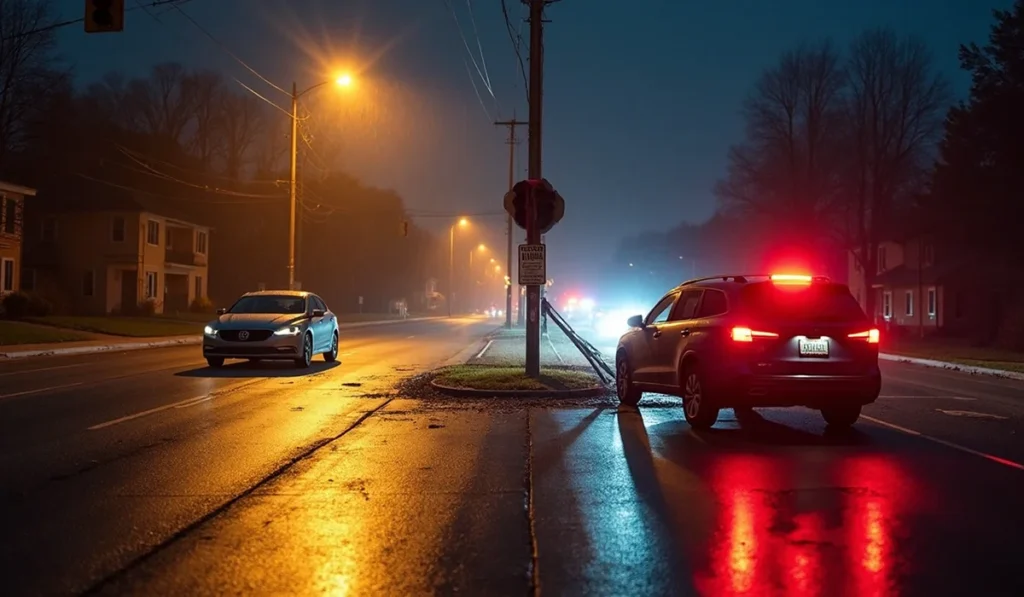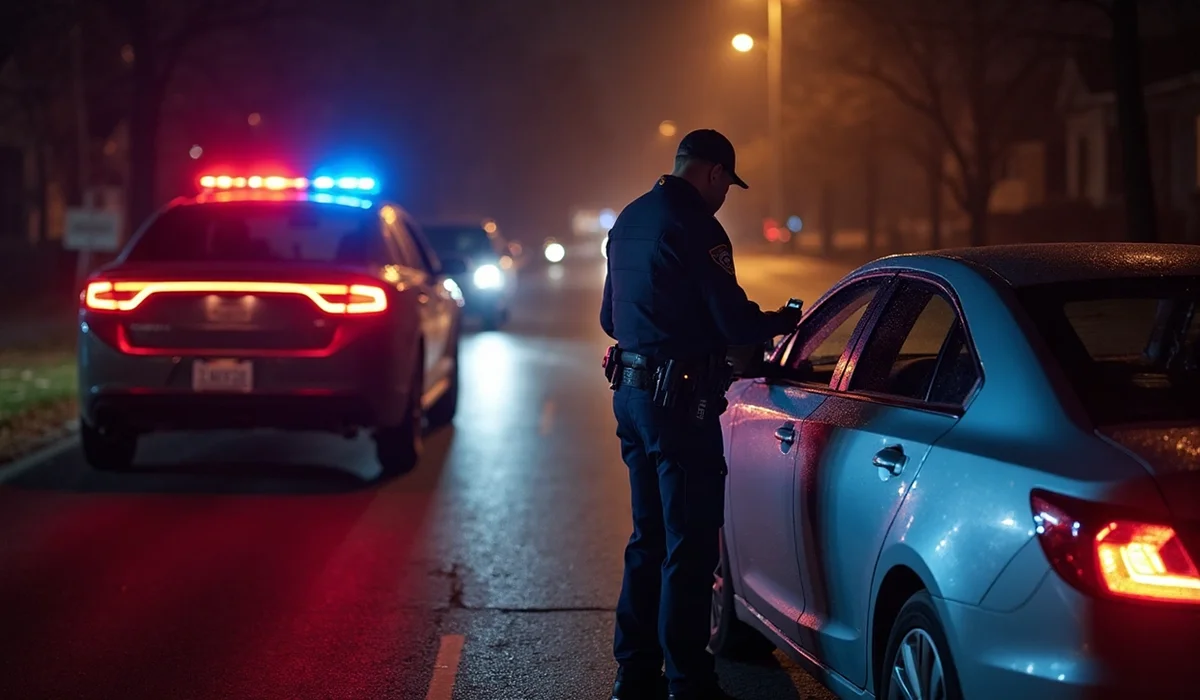American roads witness another death from impaired driving every 39 minutes. The numbers paint a grim picture – over 13,000 people lost their lives in 2022. Alcohol-related crashes made up nearly a third of all traffic deaths in the United States. A deeper look at the data reveals even more concerning trends. Drivers with a .08 BAC are 4 times more likely to crash than their sober counterparts. The risk skyrockets to 12 times higher for those with a .15 BAC.
Nighttime presents the deadliest scenario for drunk driving incidents. The data shows 9,700 fatalities during dark hours compared to 3,100 in daylight. Men were the drivers in almost 80% of these deadly crashes. The nation pays a massive price too – drunk driving crashes cost about $68.9 billion each year. Let’s get into what impaired driving really means and look at drunk driving facts across age groups and demographics. The impact of these incidents reaches way beyond the reach and influence of the impaired driver’s life.
What is Impaired Driving and How is it Measured?
A driver’s brain function, thinking, reasoning, and muscle coordination become compromised by substances during impaired driving. These abilities make up everything in safe vehicle operation, which makes impairment a critical safety threat on roads.
Impaired driving definition and legal BAC limits
Blood Alcohol Concentration (BAC) shows alcohol’s weight in a specific volume of blood. Medical professionals measure it in grams of alcohol per deciliter (g/dL) of blood. The law prohibits driving with a BAC of .08 g/dL or higher in 49 states, the District of Columbia, and Puerto Rico. Utah has set a stricter legal limit at .05 g/dL.
Drivers start showing signs of impairment well below these legal limits. Their reaction time slows down and judgment becomes cloudy with a BAC of just .02-.03. The risk of a crash multiplies by four at .08 BAC compared to sober drivers.
How BAC is measured: breathalyzer vs blood test
Law enforcement relies on two main testing methods:
Breath tests: Officers reach for preliminary breath test devices (PBTs) or evidential breath test devices (EBTs). PBTs help establish probable cause for arrests through roadside testing. These devices calculate blood alcohol percentage from breath samples. EBTs offer more sophisticated results that courts accept as evidence.
Blood tests: Medical professionals consider blood tests the most accurate method. A licensed professional draws blood and sends it to a lab. Results might take several weeks to process.
Each method serves different purposes. Breath tests give quick results without invasion, while blood tests offer better accuracy and let labs save samples for future testing.
Drunk driving stats from 2023
The latest numbers tell a devastating story. Alcohol-impaired driving claimed 12,429 lives in traffic crashes during 2023. This number represents about 30% of all U.S. traffic fatalities. Crashes that involved drivers with lower BAC levels (.01-.07 g/dL) took 2,117 more lives.
In the last decade (2014-2023), drunk-driving crashes killed about 11,000 people each year. The year 2023 saw one alcohol-impaired driving death every 42 minutes. The tragedy lies in knowing these deaths could have been prevented.
How Alcohol Affects Driving Performance
Alcohol starts to affect your driving abilities with just one sip. Lab studies clearly show how alcohol affects everything needed to drive safely, including staying in your lane, braking, and spotting hazards.
BAC levels and their effect on motor skills
Alcohol depresses your central nervous system and slows down messages between your brain and muscles. Your fine motor skills get worse as Blood Alcohol Concentration (BAC) rises. These problems show up at BAC levels far below the legal limit of 0.08%. Research shows your reaction time slows by 120 milliseconds at 0.08% BAC. A car going 70 mph will travel an extra 12 feet before you can react to danger.
.02 to .15 BAC: progressive effects on driving
Your driving gets worse in a predictable way as BAC goes up:
At 0.02-0.04%: You feel relaxed, your judgment starts to slip, and your vision gets worse, especially when tracking moving objects.
At 0.05-0.07%: Your coordination takes a big hit. Steering becomes harder, and you respond poorly to emergency situations. Studies show cars weave and swerve more, with a 4.06 cm increase in standard deviation of lateral position (SDLP) at this level.
At 0.08-0.10%: You can’t concentrate well, your short-term memory fails, and your brain processes information much slower. Your risk of crashing is about 4 times higher than sober drivers.
At 0.15%: You lose substantial control of your vehicle. Your attention span drops dramatically, and you process visual and audio information poorly. Your crash risk soars to at least 12 times higher than with zero BAC.
Why even low BAC levels are dangerous
Research proves that problems start at BACs as low as 0.02%. Drivers with BACs between 0.05% and 0.079% are 7-21 times more likely to die in single-vehicle crashes than sober drivers. Lab and test track studies confirm that most people’s driving skills suffer at 0.05% BAC.
Who is Most at Risk for Impaired Driving?
National crash data and arrest records show that some demographic groups have higher rates of impaired driving incidents than others. These patterns help us identify the people most at risk on our roads.
Age groups with highest fatality rates
Young adults make up much of alcohol-impaired driving fatalities. Both 21-24 year olds and 25-34 year olds account for the highest percentages (27% each) of alcohol-impaired drivers in fatal crashes. This alarming trend continues despite educational campaigns. Adults aged 21-24 also had the highest rates of driving after excessive drinking in the previous 30 days (3.3%).
The risk goes down as people age. The percentage drops to about 20% for the 45-54 age group and falls to roughly 15% for those 75 and older. First-time offenders under 30 are more likely to commit more DUI offenses compared to older first-time offenders.
Gender breakdown of impaired drivers
Males dominate the impaired driving statistics by a wide margin. The ratio stood at four male alcohol-impaired drivers in fatal crashes for every female driver in 2021. The data shows 22% of male drivers in fatal crashes were alcohol-impaired, while female drivers accounted for 16-17%.
Female involvement has grown over the last several years. Women made up just 9% of DUI arrests in 1980, but that number has climbed to about 25% recently. Men still represent roughly 74% of drunk driving arrests.
Motorcyclists and repeat offenders
Motorcycle riders face greater risks. The data shows 28% of motorcycle operators in fatal crashes had BACs of .08 g/dL or higher. This compares to 24% for passenger car drivers and 20% for light truck drivers. Weekend nights see 5.0% of motorcycle operators with BACs of .08 g/dL or above, while only 1.4% of passenger vehicle drivers show similar levels.
Repeat offenders pose another significant risk. They account for nearly one-third of all DUI arrests. Someone with a prior DUI has 4.1 times the risk of involvement in a fatal accident. These repeat offenders tend to be male, white, and unmarried.
Legal, Financial, and Social Consequences
A DUI conviction hits your wallet harder than almost any other driving mistake. The financial damage lasts much longer than that brief decision to drive under the influence.
Average DUI costs: fines, legal fees, insurance
DUI expenses add up quickly to between $10,000 and $30,000. Here’s how the costs break down:
- Court fines: $390-$2,000 (penalty assessments multiply these amounts)
- Attorney fees: $1,500-$10,000
- Insurance premiums: Your full coverage rates nearly double from $2,670 to $5,185 each year
- Towing and impound fees: $300-$1,000 plus $47 daily storage
- Alcohol education programs: $500-$2,500
The financial strain can last several years. A Reddit user shared their experience: “The costs kept piling up with Uber/Lyft rides during my 3-week license suspension, plus parking fees for court dates – that’s another $200 right there”.
Ignition interlock devices and license suspension
License suspensions change based on your offense number and specific situation. Your first offense typically leads to a 4-6 month suspension. Most states require an ignition interlock device (IID) to keep driving.
These breathalyzer systems cost $75-$150 to install and $70-$100 monthly. First-time offenders usually need an IID for 6 months. Multiple offenses mean longer periods—up to 3 years after a fourth offense.
Impact on passengers and pedestrians
People hurt by drunk drivers face devastating consequences. Injured pedestrians can seek money for medical bills, lost wages, and pain and suffering. Courts often award extra punitive damages because drunk driving creates such serious dangers.
The damage goes beyond legal troubles. DUI offenders face heavy social stigma that hurts their family relationships and friendships. Their career opportunities suffer. Many struggle with shame, depression, and anxiety afterward.
Conclusion
The numbers and facts in this piece tell a grim story about impaired driving in America. Without doubt, drunk driving remains one of the most preventable causes of death on our roads. It claims over 13,000 lives each year and makes up nearly a third of all traffic deaths.
Drivers start losing their basic skills with BAC levels as low as .02, but many don’t notice these early warning signs. The risk gets much worse with each drink. Drivers with a .08 BAC are four times more likely to crash than those who haven’t been drinking.
People aged 21-34 face the biggest risk, with men making up almost 80% of drunk driving deaths. On top of that, motorcycle riders show much higher rates of alcohol use in deadly crashes than other drivers.
A DUI’s impact lasts way beyond the arrest. The money it costs typically runs from $10,000 to $30,000. This includes fines, lawyer fees, higher insurance rates, and required education programs. Getting your license back takes time, and dealing with ignition locks makes everything harder. The social shame often stays with you for years.
Each drunk driving statistic represents lives that changed forever. The choice to drive drunk affects everyone – the driver, passengers, people walking nearby, and countless families. Even after years of public awareness and tougher laws, this behavior keeps hurting communities nationwide.
Here’s what matters most: alcohol never makes driving safer. These statistics should stick in your mind before you grab those car keys after drinking. Think about the huge risks that come from one bad choice. Road safety depends on every driver making smart decisions.




